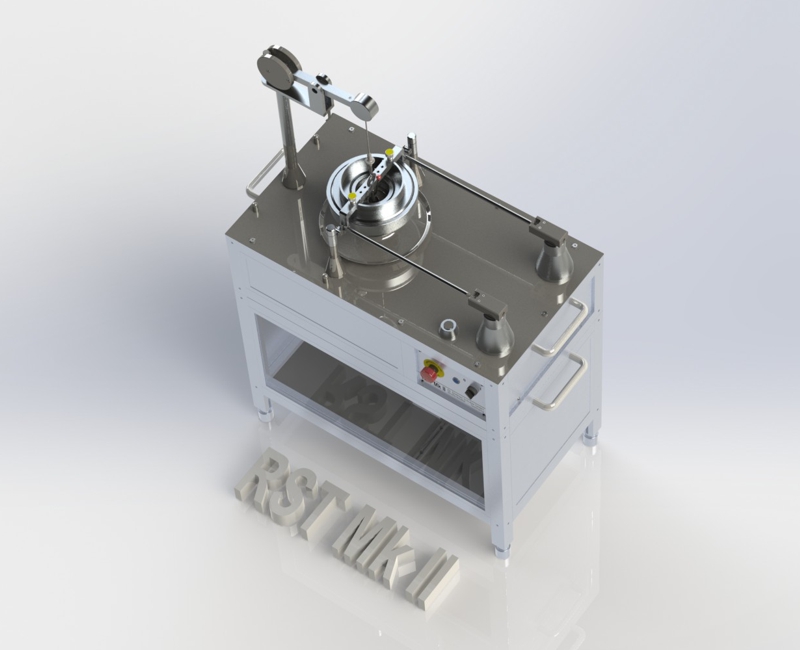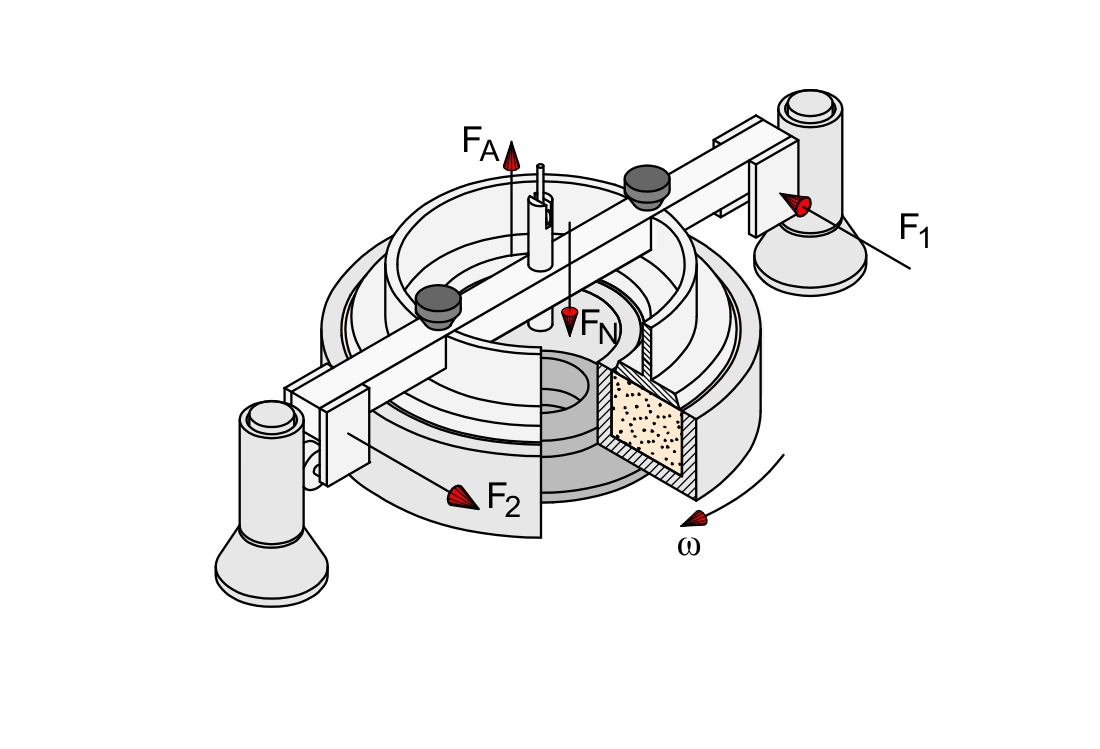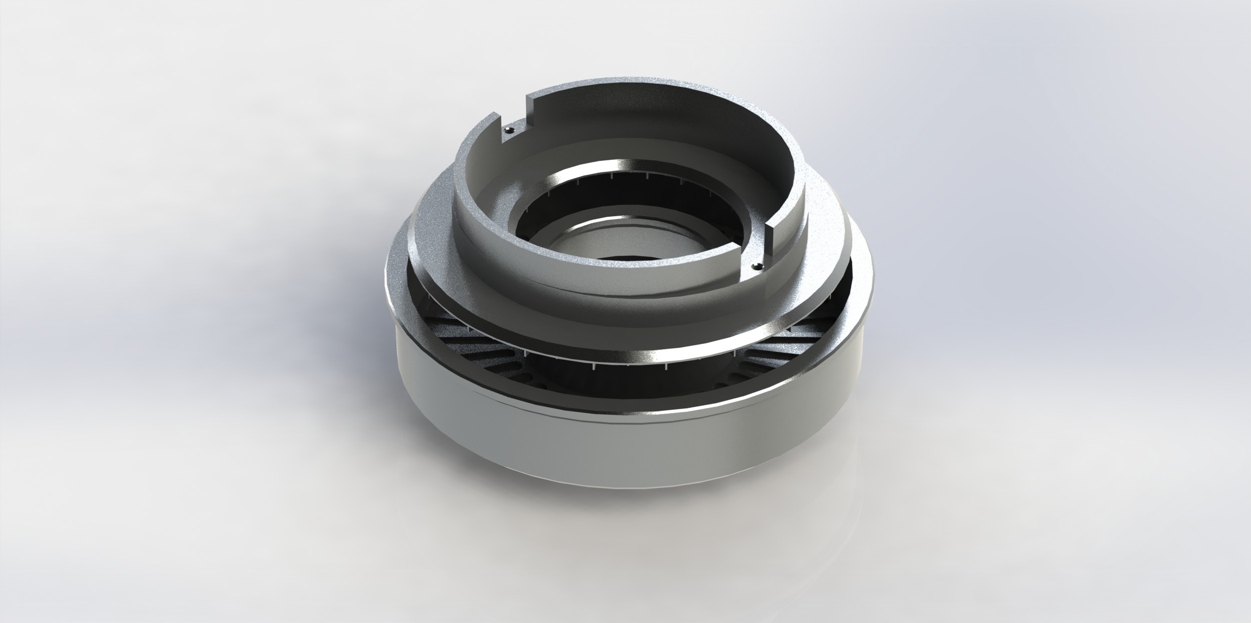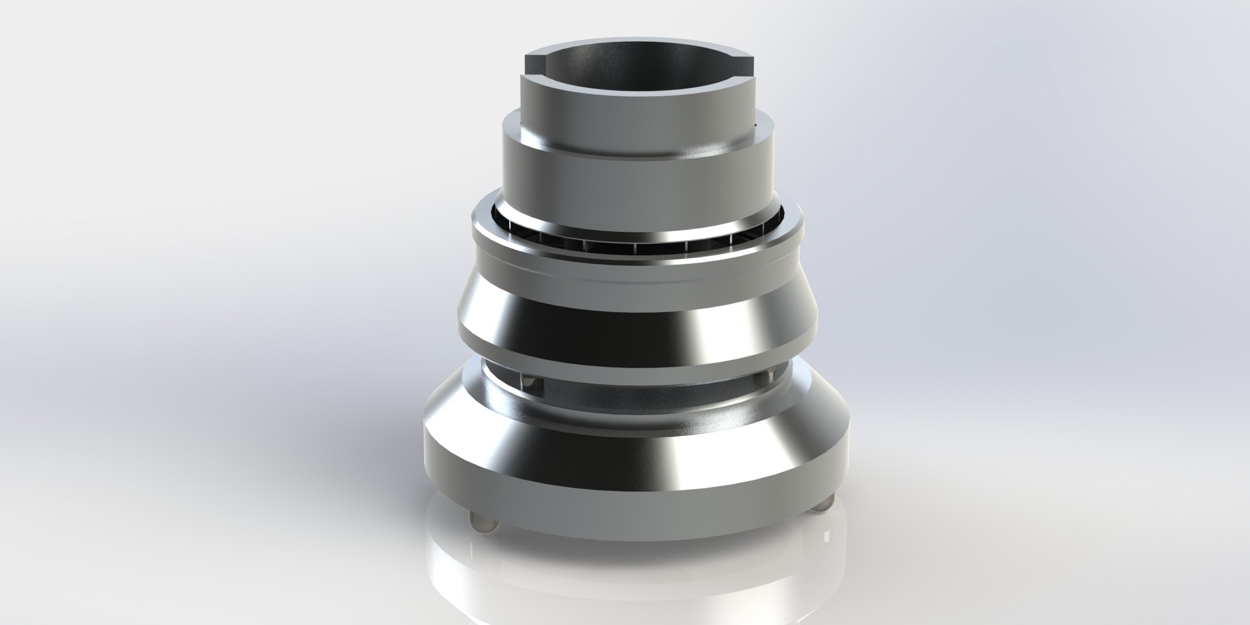Time consolidation benches
A time consolidation test examines how a bulk solid
consolidates when it is stored at rest (e.g. in a silo or
IBC). To measure this, the bulk solid specimen is first
consolidated with the ring shear tester, then stored under
constant load, and finally sheared to failure. All of this
can be done automatically with the ring shear tester,
without having to remove the shear cell with the bulk solid
specimen from the tester. The disadvantage, however, is that
the tester is blocked by this specimen. Therefore, the use
of a time-consolidation bench for external storage is
recommended.
When using a time consolidation bench, the specimen is
consolidated with the ring shear tester, then removed from
the tester and placed on a time consolidation bench. The
consolidation stress is exerted on the specimen through
weights. After the consolidation period is over (e.g., after
some hours, a day or a week), the specimen is returned to
the ring shear tester and sheared again to measure the
strength of the consolidated powder. Thus, one obtains a
quantitative result on the increase of strength during the
consolidation time, which is known as "caking".
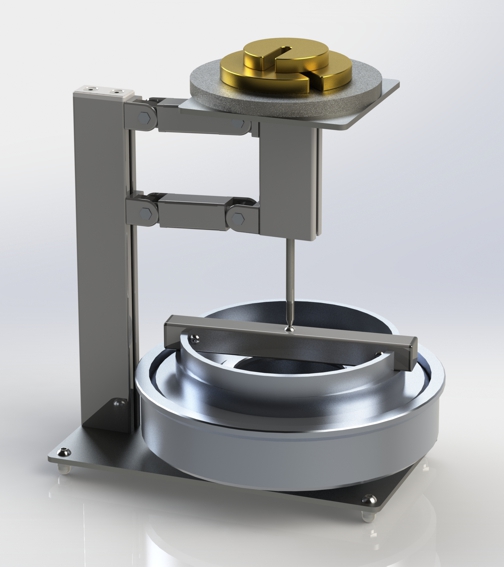 The
time consolidation bench without cover (type 1SM-O) serves
for the storage of one shear cell (type M, S or XS, maximum
load 15 kg). The consolidation load is transferred to the
powder specimen through a vertical loading system provided
with a plate on top on which an appropriate amount of
weights is placed.
The
time consolidation bench without cover (type 1SM-O) serves
for the storage of one shear cell (type M, S or XS, maximum
load 15 kg). The consolidation load is transferred to the
powder specimen through a vertical loading system provided
with a plate on top on which an appropriate amount of
weights is placed.
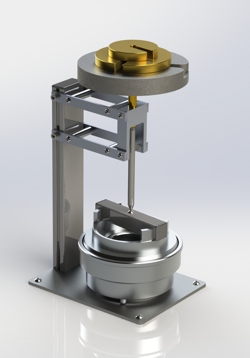 The
time consolidation bench type 1S-O serves for the storage of
one shear cell type S ore XS (volume ca. 200 ml, maximum
load 15 kg). The consolidation load is transferred to the
powder specimen through a vertical loading system provided
with a plate on top on which an appropriate amount of
weights is placed. The design without cover allows a more
intensive contact between the powder specimen and the
ambient atmosphere. This is preferable if the behavior of
the powder in dependence on the ambient conditions has to be
studied, e.g. by storing the time consolidation bench with
shear cell and powder specimen in a climate cabinet or an
oven.
The
time consolidation bench type 1S-O serves for the storage of
one shear cell type S ore XS (volume ca. 200 ml, maximum
load 15 kg). The consolidation load is transferred to the
powder specimen through a vertical loading system provided
with a plate on top on which an appropriate amount of
weights is placed. The design without cover allows a more
intensive contact between the powder specimen and the
ambient atmosphere. This is preferable if the behavior of
the powder in dependence on the ambient conditions has to be
studied, e.g. by storing the time consolidation bench with
shear cell and powder specimen in a climate cabinet or an
oven.
 The
picture on the right shows the closed time consolidation
stand 1S-C. The shear cell, which is not visible on the
image, is located in the cylindrical protective container,
which serves to shield the shear cell from the ambient
atmosphere. Conditioned air or gas can be blown into the
interior of the protective container via a hose connection.
The
picture on the right shows the closed time consolidation
stand 1S-C. The shear cell, which is not visible on the
image, is located in the cylindrical protective container,
which serves to shield the shear cell from the ambient
atmosphere. Conditioned air or gas can be blown into the
interior of the protective container via a hose connection.
The 1S-C time consolidation stand is based on the 1S-O open
time consolidation stand, which is fitted with a protective
cover. Existing time consolidation stands of type 1S-O can
be converted to type 1S-C by adding the protective cover.
Wall friction cells
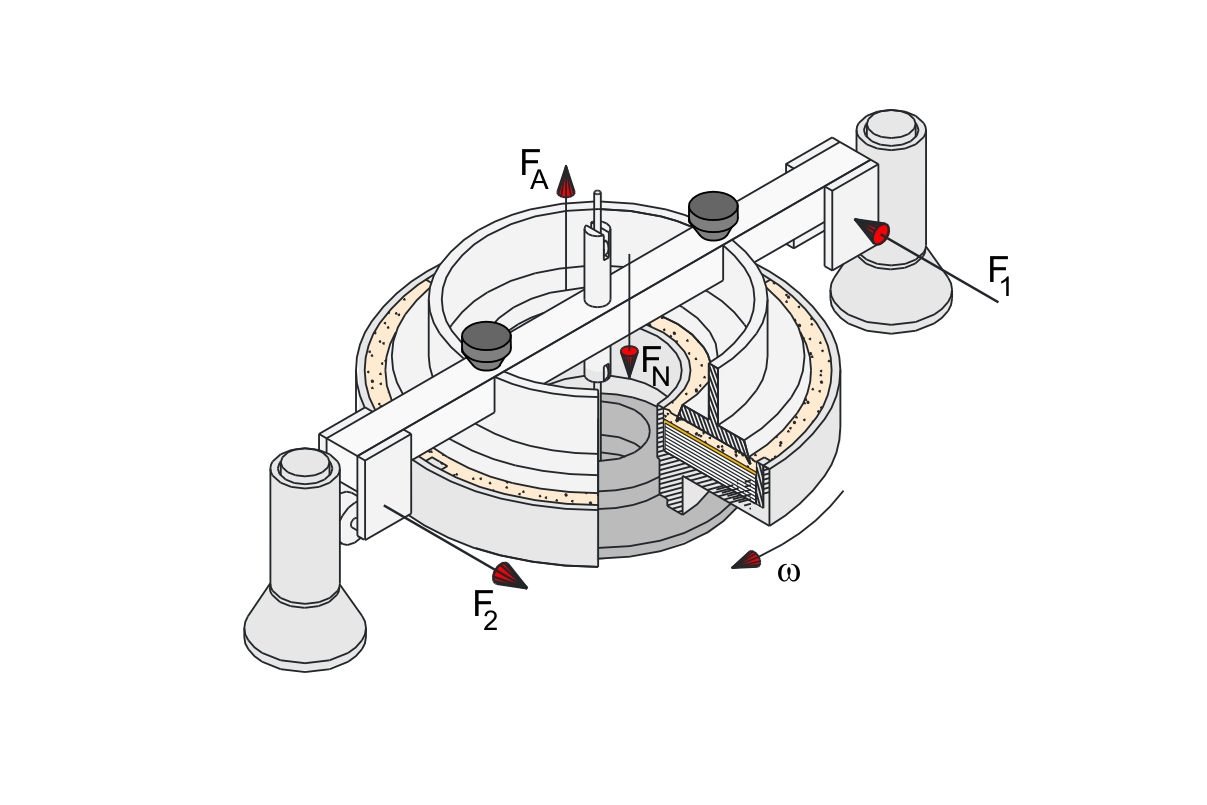 Wall
friction cells are required for the measurement of the wall
friction angle or coefficient of wall friction (friction
between a bulk solid and a wall material).
Wall
friction cells are required for the measurement of the wall
friction angle or coefficient of wall friction (friction
between a bulk solid and a wall material).
 For
the test, an annular wall material specimen ("coupon") is
placed in the shear cell with the bulk solid specimen on
top, i.e., the bulk solid is located above the wall material
like on a hopper wall or a chute, which is absolutely
necessary in order to avoid underestimating the wall
friction angle in the case of segregating bulk solids. Wall
material coupons can be made by the customer according to
dimensions given in the tester's manual.
For
the test, an annular wall material specimen ("coupon") is
placed in the shear cell with the bulk solid specimen on
top, i.e., the bulk solid is located above the wall material
like on a hopper wall or a chute, which is absolutely
necessary in order to avoid underestimating the wall
friction angle in the case of segregating bulk solids. Wall
material coupons can be made by the customer according to
dimensions given in the tester's manual.
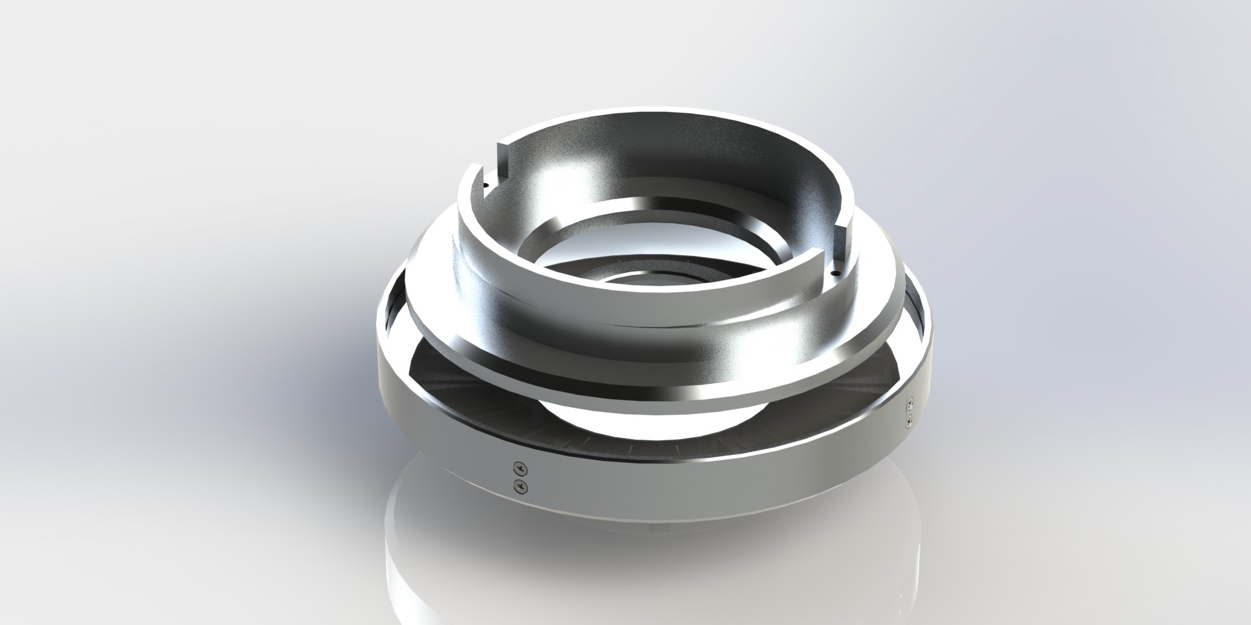
The picture above shows the current version of the wall
friction cell (shear cell type WM v2), which offers
advantages in terms of cleaning and weight. For fine-grained
bulk solids (powders), there is an optional rough lid
(picture below, principle as for the RST-XS.s ring shear
tester) instead of the normally used lid with vanes/pockets
which is preferable for coarse-grained bulk solids.
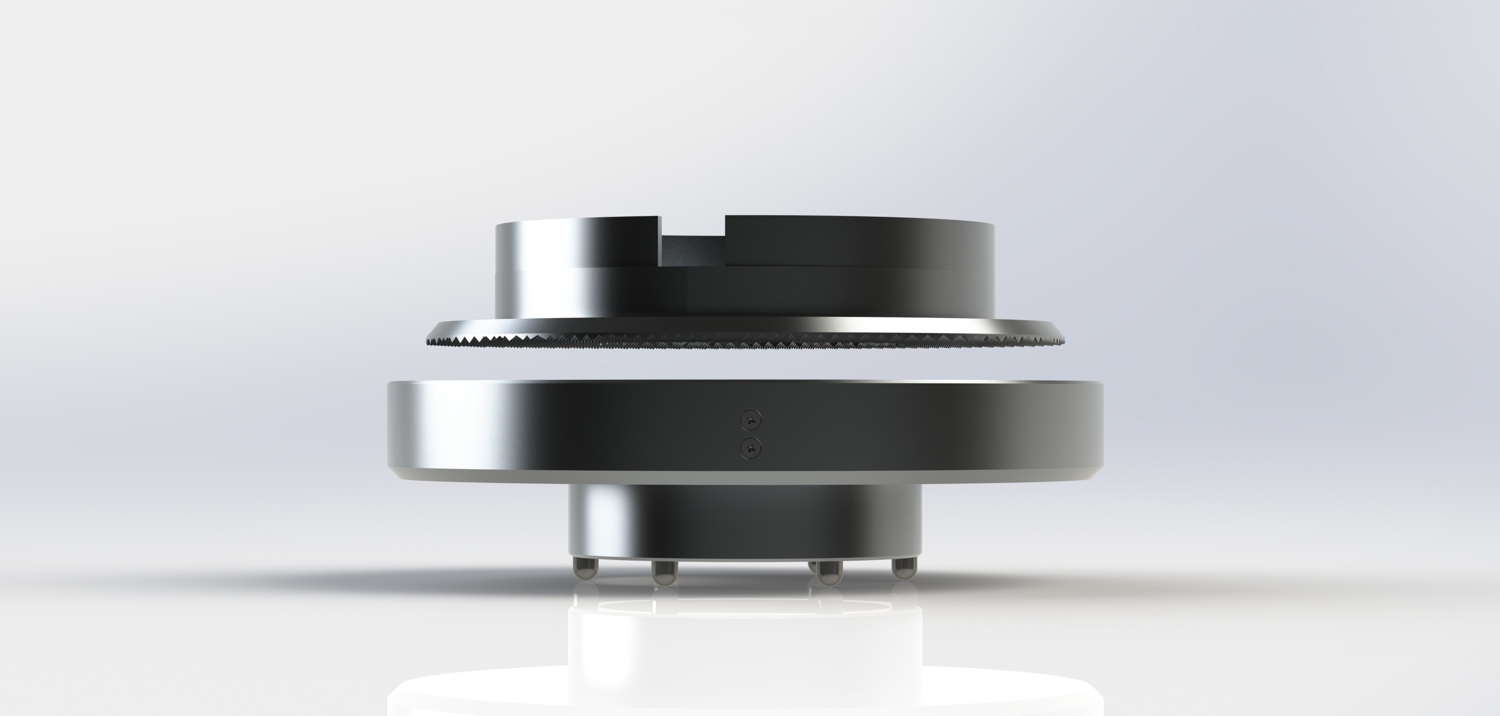
| Name |
Description |
| WM |
"Standard" wall friction cell, specimen volume
about 240 ml, outer diameter of the wall material
coupon about 215 mm.
Optionally with rough lid for optimization for fine
bulk solids |
| WS |
Wall friction cell with specimen volume of about
95 ml, outer diameter of the wall material
coupon about ca. 134 mm |

